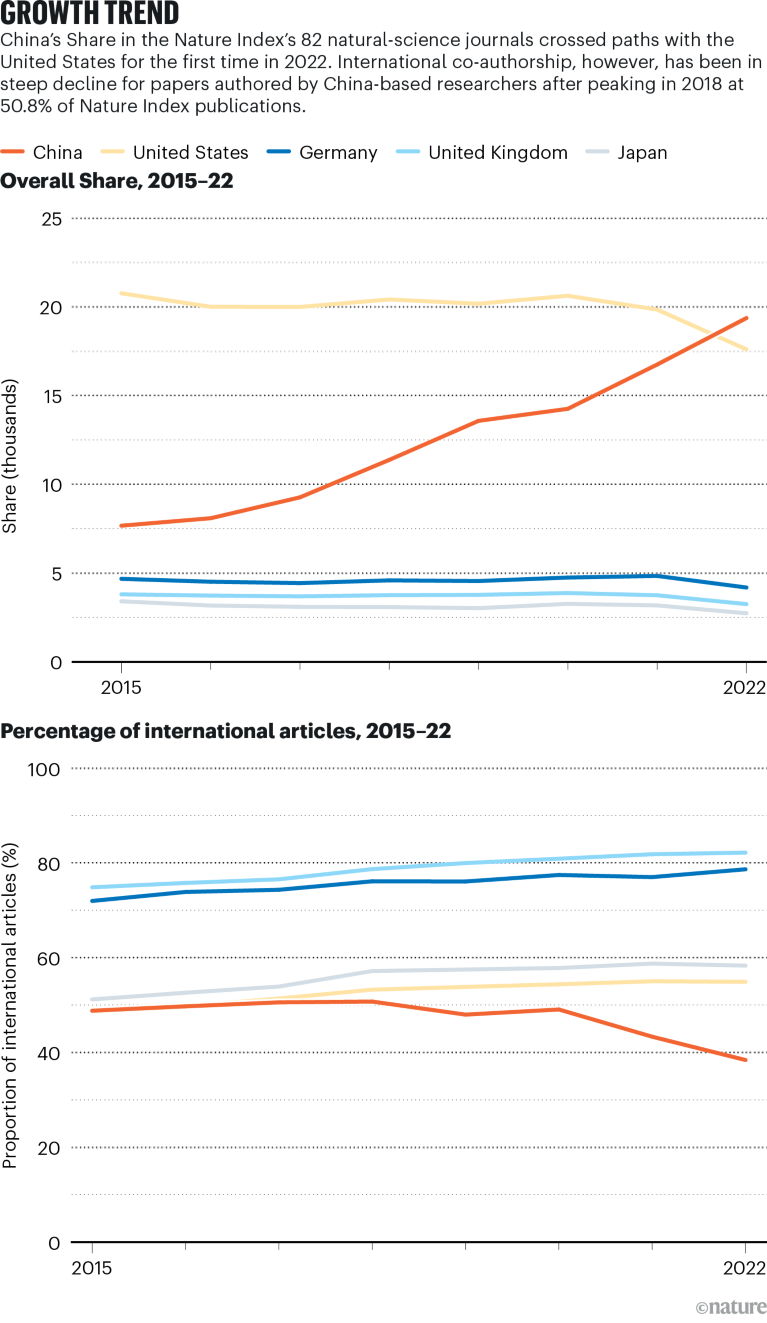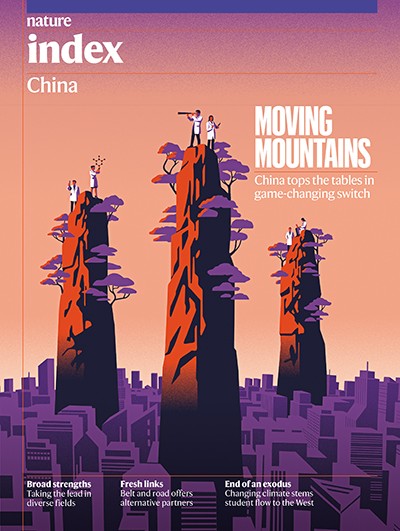What China’s leading position in natural sciences means for global research
What China's leading position in natural sciences means for global ... Nature.com


China Surpasses United States in Scientific Productivity
China is pursuing areas of green innovation, such as this smart greenhouse in Yongchuan that automates key processes in rice-plant cultivation.Credit: Si Chuan/Feature China/Future Publishing via Getty Images

China has achieved a significant milestone in scientific productivity, surpassing the United States for the first time in the Nature Index for the natural sciences. This achievement is a result of China’s upward trajectory in scientific productivity over the past few decades. China’s Share score, which measures its contribution to publications in high-quality natural science journals, has rapidly grown since the launch of the Nature Index in 2014.
Nature Index 2023 China
In 2015, China’s adjusted Share was almost one-third of the United States’ score. However, year-on-year growth has propelled China to the top spot in 2022, surpassing the United States in scientific publications and contributions to highly-cited papers. These achievements are significant for Chinese universities and policymakers, highlighting China’s commitment to scientific research and development.
Building a World-Class Science System
China’s rise in scientific productivity is a remarkable achievement, considering its relatively short timeline. The country’s ‘reform and opening-up’ policy in 1978 laid the foundations for its higher education and scientific system. The strength of China’s innovation ecosystem and its focus on technological innovation have been key factors in its scientific success.
Contrary to common belief, Chinese research often demonstrates high levels of innovation. Studies have shown that papers with China-based co-authors are more likely to cross disciplinary boundaries and engage in creative research. Chinese universities, such as Tsinghua University and Sun Yat-sen University, have been driving the surge in publications, with significant increases in their adjusted Share scores.
Investment and Resources
China’s research productivity is supported by immense resources and investment. In 2019, China and the United States accounted for half of global research and development spending. China’s spending on research and development has steadily increased, reaching an all-time high of 2.4% of its GDP in 2021. The country’s focus on problem-solving and targeted investment in scientific, technological, and engineering areas have contributed to its scientific advancements.
Source: Nature Index

While China’s research and development spending is still lower than that of the United States, its focused approach and emphasis on results have yielded significant scientific advancements. China’s 14th Five-Year Plan highlights its commitment to technological innovation and sets specific development goals for various fields, including artificial intelligence, network communications, and modern energy systems.
Contributions to Sustainable Development Goals
China’s scientific achievements extend to areas that align with the Sustainable Development Goals (SDGs). The country has emerged as a leader in environmental research, tackling urgent challenges such as air and water pollution, green energy transition, and biodiversity loss. China’s efforts in these areas have been recognized in the Earth and environmental sciences, where it surpassed the United States in the Nature Index.









